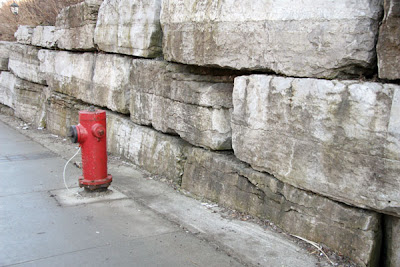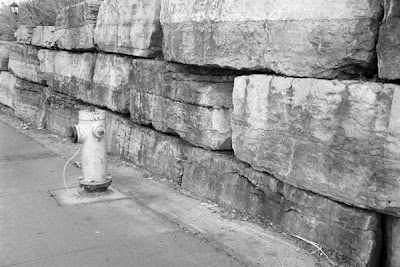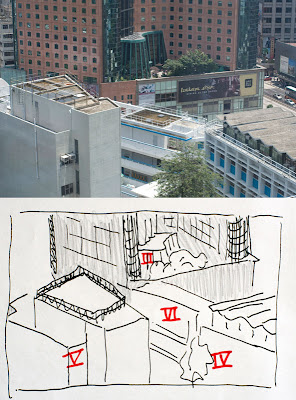

Of course, there are ways to increase the range of tones in a flat scene like this, such as the use of a red filter, as simulated digitally below.

Being to add punch with colour doesn't mean that tones are no longer important, as illustrated in the picture below.
 This picture was taken because, #1 it was a convenient look out of my window and #2 it was a sunny day so the scene had lots of dynamic range from the dark interior of the hotel lobby to the bright reflections on the white building. I spot metered the scene and labelled some of the larger areas. The reflections on the roof reached much higher values than zone VI and were hence impossible to preserve if the rest of the scene was to remain visible. It was decided that the areas against the sun, the brown wall of the hotel and the building on the left (which made up the majority of the picture) were to be placed in zone V, the rest of the scene fell into their respective zones as noted in the sketch. The shadowed areas were placed in zone V to ensure that the areas under direct sunlight would be in zones Vi and above to convey the snese of harsh sunlight on a cloudless summer noon.
This picture was taken because, #1 it was a convenient look out of my window and #2 it was a sunny day so the scene had lots of dynamic range from the dark interior of the hotel lobby to the bright reflections on the white building. I spot metered the scene and labelled some of the larger areas. The reflections on the roof reached much higher values than zone VI and were hence impossible to preserve if the rest of the scene was to remain visible. It was decided that the areas against the sun, the brown wall of the hotel and the building on the left (which made up the majority of the picture) were to be placed in zone V, the rest of the scene fell into their respective zones as noted in the sketch. The shadowed areas were placed in zone V to ensure that the areas under direct sunlight would be in zones Vi and above to convey the snese of harsh sunlight on a cloudless summer noon.Matrix metering suggested that I expose for an extra stop which, for me, would have blown out the lower half of the picture and destroyed the feeling of harsh directional light.
No comments:
Post a Comment